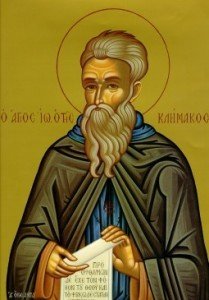 The 28th Step on John’s Ladder, which is PRAYER, provides us with a similar structure for prayer: “Heartfelt thanksgiving should have first place in our book of prayer. Next should be confession and genuine contrition of soul. After that should come our request to the universal King. This method of prayer is best”. This is a general guideline. There are, however, many forms of prayer. The attitude of prayer, however, is the same for all. Some talk and deal with God as with a friend and master, lifting their praises and their requests to Him not for themselves but for others. Some look for greater spiritual treasures. Some seek help to accomplish personal transformation.
The 28th Step on John’s Ladder, which is PRAYER, provides us with a similar structure for prayer: “Heartfelt thanksgiving should have first place in our book of prayer. Next should be confession and genuine contrition of soul. After that should come our request to the universal King. This method of prayer is best”. This is a general guideline. There are, however, many forms of prayer. The attitude of prayer, however, is the same for all. Some talk and deal with God as with a friend and master, lifting their praises and their requests to Him not for themselves but for others. Some look for greater spiritual treasures. Some seek help to accomplish personal transformation.
There are also different “forms” of prayer. One of the greatest teachers of prayer, St. Theophan the Recluse, identified three different forms, even though he referred to them as stages or levels. The three forms are (1) spoken prayer, (2) mental prayer and (3) prayer of the heart. Even though each form is higher than the last, even the lowest form of prayer never disappears from the spiritual life of even the most advanced practitioners of prayer. Each form has a place in our lives. I would like to share some thoughts about each of these forms of prayer.
Prayers that are considered SPOKEN PRAYERS are those that we typically find in prayer books. I have referred to them as “formula prayers” – prayers written be someone else or those presented by the Church, such as the Psalms, which, as many may know, appear in almost all of our services. They are a good place to begin learning how to pray. One of the problems, however with the Psalms, is that we must remember that they were written for the Chosen People and, at times, are difficult to understand as Christians. Also, the psalms are not only prayers but also prophecies.
More to follow
